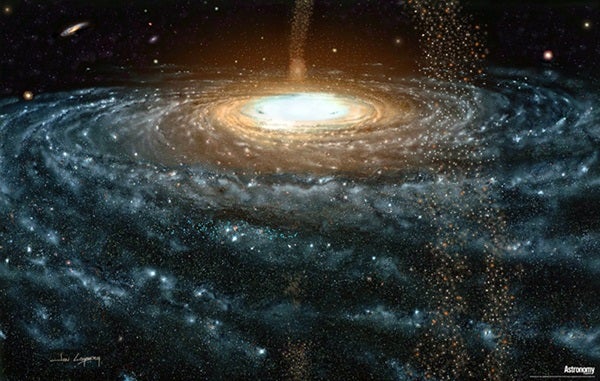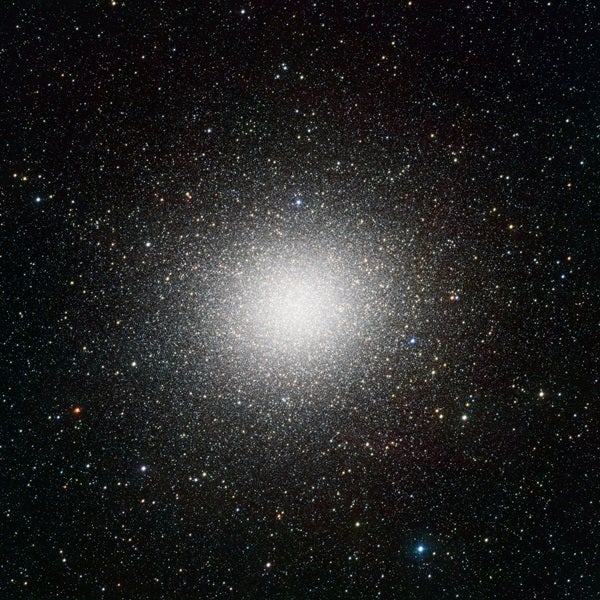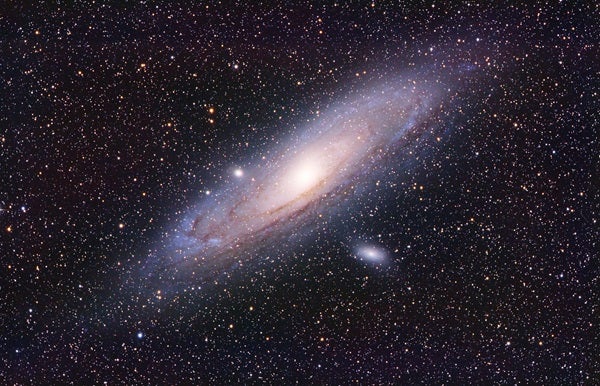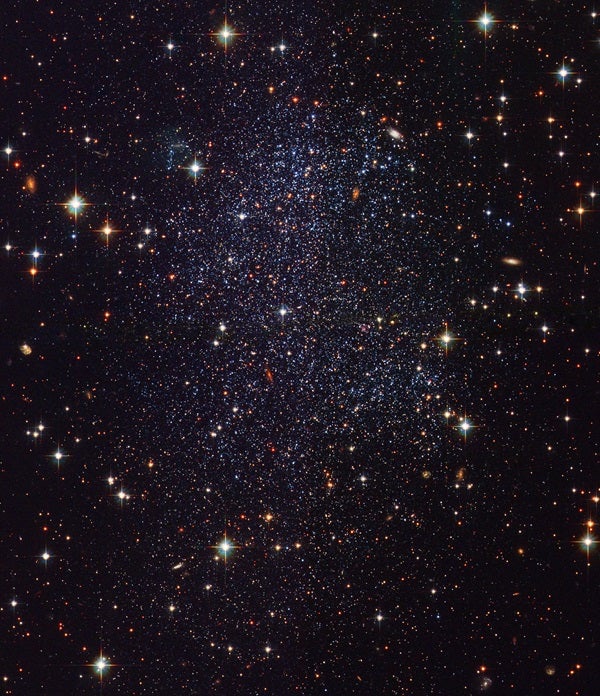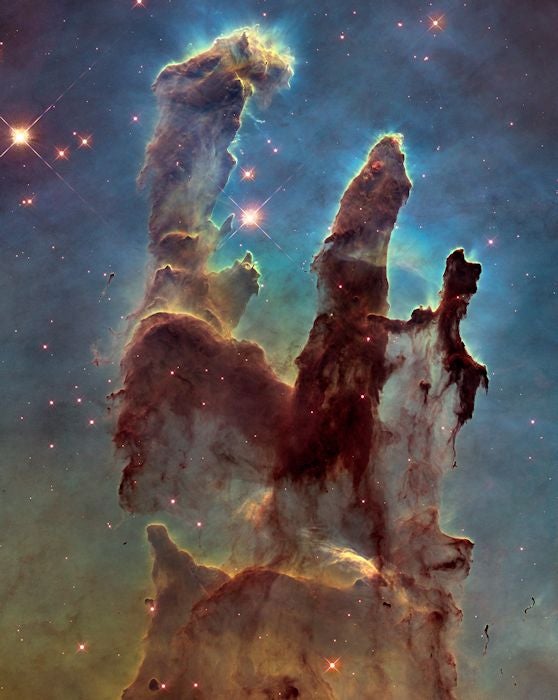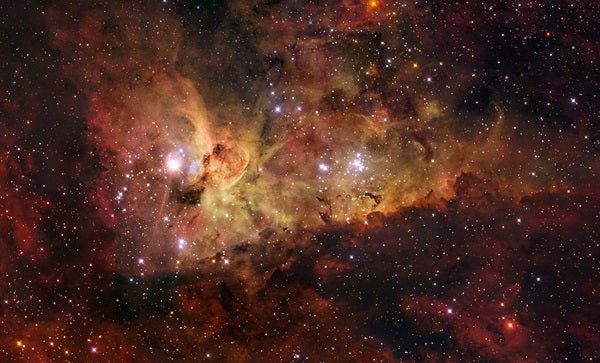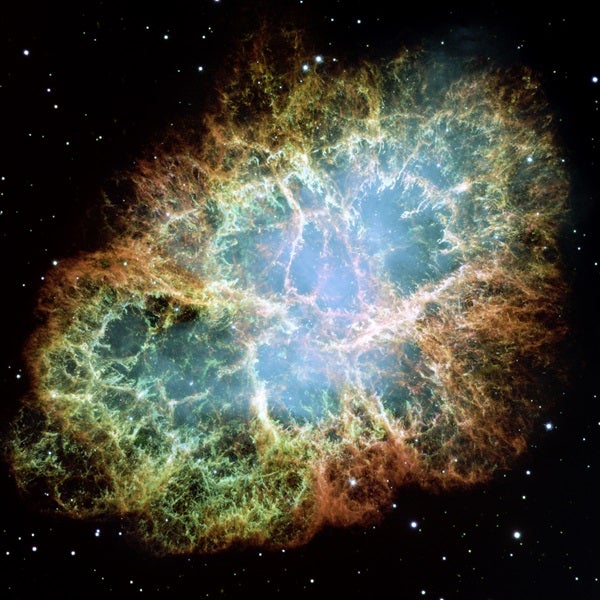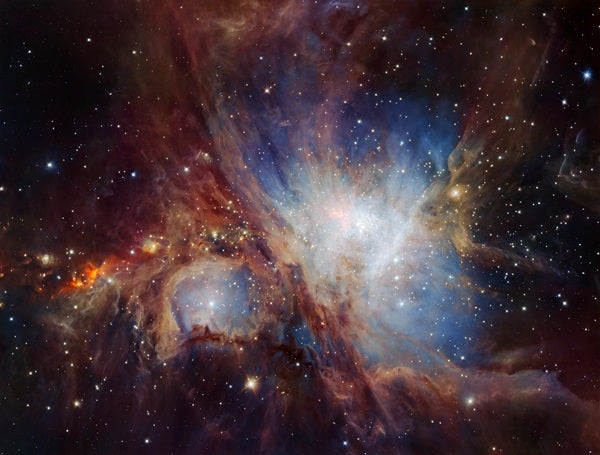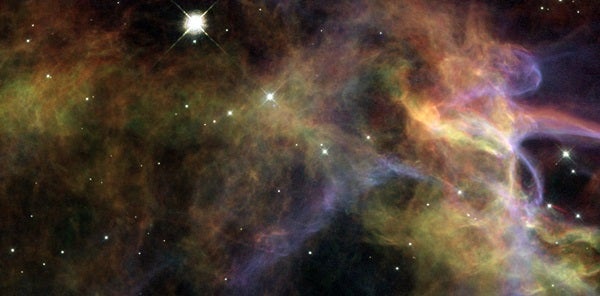This unique poster shows our current understanding of the Milky Way Galaxy in which we live. It represents the culmination of both scientific and artistic efforts to visualize our local neighborhood within the cosmos, and reflects our most detailed and accurate data to date.
For your reference: 1 light-year = 6 trillion miles = 9 trillion kilometers
You are here
Artist Jon Lomberg says, “When you see a group photograph, you look for yourself first.” In his painted Portrait of the Milky Way, the Sun (1) stands out near the center of the image. But our star and the solar system in which we live are actually located about 25,000 light-years from the bright center of our galaxy, called the bulge.
Surrounding the entire galaxy like a dim, spherical cloud is our Galactic Halo (26). The halo contains our galaxy’s oldest stars, largely within its roughly 150 known globular clusters — including the rich Omega Centauri Globular Cluster (25), readily visible from Earth’s Southern Hemisphere. Although invisible on this map, our galaxy is also surrounded by a massive halo of dark matter as well. Our dark matter halo only interacts with the normal matter in our galaxy via its gravitational influence; it has left its fingerprint in the structure and behavior of the visible matter we do see.
Our Milky Way Galaxy is part of a Local Group of at least 54 known galaxies bound together by gravity. The Milky Way is the second-largest galaxy in this group. The Andromeda Galaxy, M31 (27), is the largest member, about twice the size of our home and roughly 2.5 million light-years away. The Triangulum Galaxy, M33 (28), about 3 million light-years distant, is the third-largest member of our Local Group. Astronomers believe it is bound to Andromeda as a satellite galaxy, orbiting and fated to possibly merge with it to become part of a larger structure.
When we map our Milky Way, we are limited by our viewpoint. We can only view the galaxy from Earth — or very near Earth — and have thus mapped the region closest to our place on the Orion Arm much more easily than the rest of the galaxy. Because brightness diminishes quickly with distance, and even faster with the obscuration of the dust found throughout our galaxy, you’ll see that the majority of our labeled objects fall relatively close to the Sun.
There are ways, however, to look beyond our closest spiral arms. One of the best examples of a serendipitous workaround, provided by the galaxy’s structure itself, is Baade’s window (19), named for astronomer Walter Baade. This is an area of the Milky Way low in dust content. When we look in this direction from Earth, we see the bright disk of the Milky Way without heavy obscuration, allowing astronomers to study the more distant bulge and its components in better detail. If you were to look up at the sky, Baade’s window is located near the constellation Sagittarius, which is also the direction of the galactic bulge.
The Kepler spacecraft searched for extrasolar planets (18) among the stars in a narrow region along the Orion Arm, looking “ahead” of us in the direction of the galaxy’s rotation (the spiral arms of a galaxy generally trail its direction of rotation). This dataset itself only represents the smallest fraction of extrasolar planets likely found throughout our galaxy, as planetary systems now seem the norm, rather than the exception, around most stars.
Our map also highlights some of the most recognizable objects in the night sky; you can see that most are contained within the Orion Arm, and all are on the “near” side of the bulge in the closest spiral arms. These local objects range from young clouds of gas and dust just beginning to form stars to the last remaining wispy, tangled vestiges of long-dead massive stars.
The Cygnus Loop or Veil Nebula (8) and Crab Nebula (14) are nearby supernova remnants; though the creation of the Cygnus Loop predates recorded human history, it would have been visible from Earth. The Crab Nebula contains a pulsar and is associated with a supernova seen in the year 1054.
This exquisite map of our Milky Way Galaxy has been hundreds of years in the making. It reflects the most up-to-date research available, including the ever-increasing number of known exoplanets and recent findings indicating that the Orion Arm is longer and more clearly separated from the Sagittarius Arm than previously believed.
You can see more of the objects highlighted in this poster in our online gallery.

